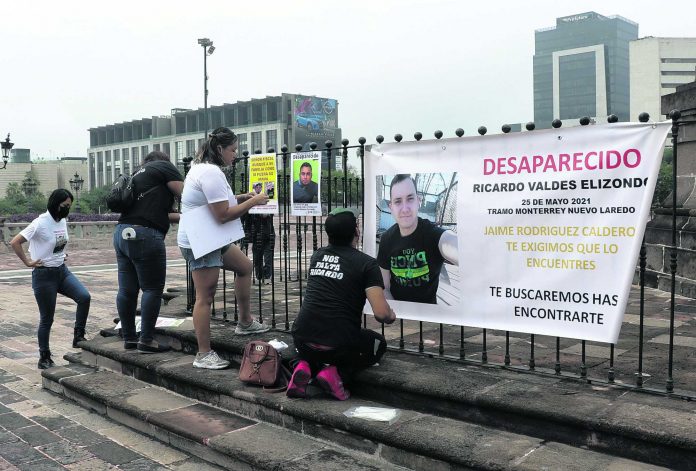
Associated Press
MEXICO CITY (AP) — At least 71 people have gone missing this year on a highway between Mexico’s industrial hub of Monterrey and the border city of Nuevo Laredo, authorities said Wednesday.
Earlier estimates by relatives of the victims — at least half a dozen of whom are U.S. residents — had placed the number of disappeared so far this year at around 50.
The head of Mexico’s National Search Commission, Karla Quintana, said most of the missing are men who drove trucks or taxis on a road that local media have dubbed “the highway of death.”
Quintana said investigations are focusing on a point near where the highway enters Nuevo Laredo, which has long been dominated by the Northeast drug cartel. Quintana said the disappearances may be related to turf battles between the Jalisco and Northeast cartels.
But the missing also include women and children and men driving private cars.
The FBI office in San Antonio, Texas, has issued a bulletin seeking information on the disappearance of a Laredo, Texas, woman, Gladys Perez Sánchez, and her 16-year-old son and 9-year-old daughter, who were last seen setting out on the highway June 13. They had visited relatives in Sabinas Hidalgo, a town on the highway, and were returning to Texas in their car when they vanished.
In recent months, activists say about a half dozen men have reappeared alive and badly beaten after being abducted on the highway, and all they will say is that armed men forced them to stop on the highway and took their vehicles.
Despite alerts from relatives of the missing, the state government of Nuevo Leon, where Monterrey is located, didn’t warn people against traveling on the highway until almost a month later, on June 23. Authorities have since increased policing and security on the highway, and are searching for the missing.
The disappearances, and the June shooting of 15 apparently innocent bystanders in the border city of Reynosa, suggest Mexico is returning to the dark days of the 2006-2012 drug war when cartel gunmen often targeted the general public as well as one another.
“It’s no longer between the cartels; they are attacking the public,” said activist Angelica Orozco.
Given the propensity of cartels in the region to incinerate the bodies of their victims, it is not clear that if those who disappeared on the highway are dead whether their bodies could ever be found.
On Wednesday, Quintana revealed that at a point farther east along the border, authorities have excavated a shocking half-ton (500 kilograms) of burned bone fragments, apparently human, since the site was found in 2017. Quintana described the bone dumping ground at a spot near the border city of Matamoros as a “place of extermination.”
The total number of people who have gone missing in Mexico since 2006 and have never been found stands at almost 87,855.
Officials in the early 2000s were often quick to repeat an old belief that drug cartels only killed each other, not innocent civilians, a belief that apparently hasn’t completely died.
On Wednesday, Assistant Interior Secretary Alejandro Encinas said that almost 80% of present-day killings “are associated with criminal activities.”



















